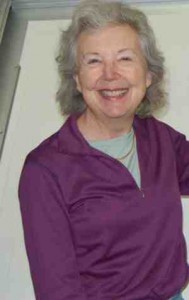Sidebar by Ed Quillen
Transportation – July 2007 – Colorado Central Magazine
In recent years, passenger trains have made a comeback in Central Colorado — not as regular modes of transportation for people interested only in getting from here to there, but as tourist excursions for passengers to enjoy the scenery and the experience of riding on the rails.
The closest such train to the old Royal Gorge of the 1960s is, of course, the Royal Gorge Route, whose first train ran on May 15, 1999, after the Union Pacific stopped service on the Tennessee Pass line.
The company runs three trains daily (and an extra dinner train some days) through the Gorge from Cañon City to Parkdale (about 12 miles west on the upstream side of the Gorge) and back.
The round trip takes about two hours, with many options: coach, parlor, cab trips, and Vista Dome for riding, and gourmet lunches and dinners, along with special wine-tasting and murder-mystery excursions.
Cars are air-conditioned (there’s also an open car so you can gaze upward), and the train equipment is from the 1950s and ’60s; the Royal Gorge Route boasts four Vista Dome cars, the largest collection in the United States. The train rides smoothly and it’s not in any hurry; this trip probably comes as close as you can get to what it was like to ride the D&RGW into Central Colorado 40 years ago. You can find out more at royalgorgereservations.com.
Leadville’s passenger service revived in 1988 after a long hiatus. The last D&RGW passenger train came through in 1964. It didn’t go into Leadville; the station was at nearby Malta, where northbound U.S. 24 turns east to go into Leadville.
The last regular passenger train in Leadville proper was the narrow-gauge Colorado & Southern, which terminated service in 1937. The tracks from Denver through South Park and Breckenridge to Climax were abandoned that year and removed.
The 12-mile line from Climax to Leadville remained in freight service for the immense Climax Molybdenum Mine at the summit of Frémont Pass. It was converted to standard-gauge in 1943.
The Climax Mine operated sporadically in the 1980s, and it appeared that the line — owned by the Burlington Northern which had acquired the C&S — would be abandoned. But instead it was sold for $10 to Ken and Stephanie Olsen of Leadville, who converted it to passenger service and christened it the Leadville, Colorado & Southern.
The scenery is grand, and there’s a lot of history, including an old water tank, along the route. The trains are open to the air and have a frontier feel even though they’re pulled by a modern diesel locomotive. Given Leadville’s climate, you should take a sweater. In mid-summer, the LC&S runs two trains a day from Leadville to about 11,000 feet above sea level. Fares and other information are at leadville-train.com.
Alamosa saw its last regular passenger train in 1953. Some passenger trains did pull out of Alamosa in succeeding years, but they were special excursions on the narrow-gauge line to Antonito and then Durango — a steam-powered segment of that line, from Antonito to Chama, N.M., operates now as the Cumbres & Toltec.
Summer passenger service resumed over the standard-gauge line in 2006 and continues this year, with daily trains from Alamosa to La Veta and back (an all-day trip that includes a pleasant hour or two in La Veta).
When I rode the La Veta train last year, the scenery was spectacular with tunnels and sharp curves after we got to Blanca (before that, it’s mostly sagebrush), and the ride was smooth. However, the cars were stuffy, and there wasn’t much in the way of amenities. This year the railroad has upgraded its cars so they now have heat, air conditioning, improved restrooms, a parlor car and a full-service concession car.
The railroad also runs a daily connecting train to the C&TS at Antonito and its narrow-gauge trains. You can find out more at alamosatrain.com.
The D&RGW may have given up on passenger service hereabouts 40 years ago, but passenger trains have made a comeback — even though many people must now drive a ways to catch the train. — E.Q.

